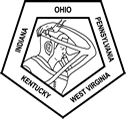<< Back to the abstract archive
Cleft Care in the Developing World: A Unique Model for Cleft Missions
Samar Sheriff, MBA,
Haithem M. Elhadi Babiker, MD, DMD
Cincinnati Children's Hospital Medical Center
2017-01-25
Presenter: Samar Sheriff
Affidavit:
Samar Sheriff is a second-year medical student at the University of Toledo College of Medicine. She worked as a student in the Plastic Surgery department at Cincinnati Children's. For this project specifically, I gave her all of the pertinent information (there is not much data involved, it is more of a discussion-based project) about the past medical missions SAMA/CCHMC has done. She synthesized all of the information and wrote the abstract. She is planning to write the draft of the paper for publication after the conference, pending the abstract is accepted. Additionally, she will be going to Sudan with me next month (February 2017) to obtain data to start the cleft database and birth defect registry.
Director Name: Haithem M. Elhadi Babiker, MD, DMD
Author Category: Medical Student
Presentation Category: Clinical
Abstract Category: Craniomaxillofacial
Background and Purpose:
Several barriers to cleft care exist in the third world and Sudan is no exception. Poverty rates are high, patients must travel far distances to receive medical services, and there are no specialized craniofacial centers. Review of the literature revealed only one study regarding cleft incidence in Sudan. Currently, no birth defect registry exists and cleft care is fragmented across different surgical specialties. In addition, there is severe lack of training among the local surgeons in cleft care. In order to address these issues, the Sudanese American Medical Association (SAMA) and Cincinnati Children's Hospital Medical Center (CCHMC) have created a successful partnership to improve cleft care in Sudan.
Methods:
Between 2014 and 2016, a team from CCHMC (sponsored by SAMA) undertook three surgical mission trips to Sudan. The objectives of these missions were two-fold: humanitarian to provide free cleft surgeries; and educational to train the local surgeons.
Results:
A total of 88 cleft surgeries have been performed. Each patient was closely followed post-operatively and there were no complications. The local surgeons participated in every surgery and numerous lectures and workshops were conducted.
Conclusions:
Several accomplishments have materialized from this initiative: creation of the first Sudanese multidisciplinary craniofacial center, launch of a Sudanese birth defect registry, and the local surgeons becoming better trained. With a focus on quality care rather than quantity, this model of cleft missions may provide valuable lessons to other philanthropic cleft care efforts globally.



